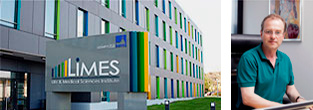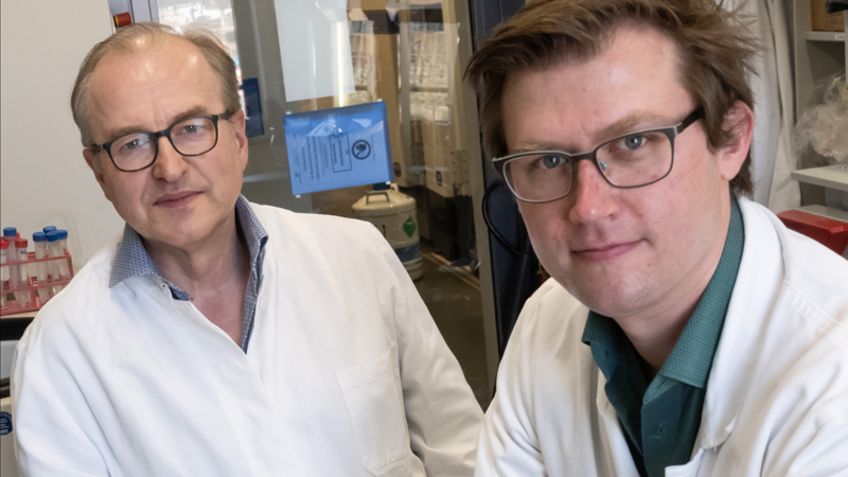Like stripe policemen, T-cells migrate through the body and look for pathological changes or burglars. If the T-cells find anything, they will alert other immune cells. This way the intruder or the sick cell is switched off. It is important that there is always a sufficient number of policemen. They are recruited in the bone market where the T precursor cells are generated and then migrate into the thymus where they mature. The T cells are named after this organ. The thymus gland is located behind the sternum, above the heart. From there, the T cells continue to migrate into the blood circulation and into various organs.
It is not yet fully clear who is commanding this group and who decides on the distribution of the "immune" policemen in the body. An important messenger for the migration of immune cells from the thymus into the bloodstream is sphingosine-1-phosphate (S1P). The substance serves as a kind of attractant for the T cells. "When the amount of S1P in the thymus and in the blood vessel is in a certain ratio, the T cells are migrating," says Prof. Dr. Waldemar Kolanus of the Life and Medical Sciences (LIMES) Institute of the University of Bonn. The question is how this concentration gradient is maintained as a marching command.
With a team of the ImmunoSensation Cluster of Excellence of the University of Bonn, including Prof. Dr. Christian Kurts from the Institute of Experimental Immunology as well as the University Hospital of Jena, Prof. Kolanus has now discovered another enzyme as an important regulator for the distribution of T-cells in the body: Ceramide synthase-2 (Cers2) affects the efficacy of S1P.
Prof. Dr. Klaus Willecke from the LIMES Institute of the University of Bonn provided mice with no Cers2 enzyme. In these animals the scientists showed that the concentration gradient at S1P was disturbed and therefore the attractant for the T cells did not work. Therefore, the police units did not go on patrol. S1P and Cers2 compete together for an enzyme, which produces the attractant sphingosine-1-phosphate from a precursor substance. If the supply of Cers2 is too large, too little of S1P can be produced because the enzyme is then partially blocked.
"This leads to a change in the S1P concentration within a narrow range," says first author Michael Rieck, PhD student in Kolanus group. "If too much or too little Cers2 is present, the enzyme is inhibited and the required amount of S1P can not be formed." This is similar to a strong lure, for which the nose is insensitive - the doors are thus closed for the strip policemen. Experiments of the researchers indicate that the amount of Cers2 is again mediated via the blood.
"Cers2 is of fundamental importance for the renewal of T cells in the bloodstream," says Prof. Kolanus. This is an important prerequisite for keeping, for example, intruded pathogens in check. Also for the treatment of autoimmune diseases the results potential, so the researchers. For the treatment of multiple sclerosis, a drug is already on the market, which prevents the migration of misguided immune cells that would otherwise attack the body's own tissue. "However, further active substances with novel starting points are used, which in the case of autoimmune diseases prevent the migration of harmful immune cells," says Prof. Kolanus.
Publication:
Rieck M, Kremser C, Jobin K, Mettke E, Kurts C, Gräler M, Willecke K, Kolanus W. Ceramide synthase 2 facilitates S1P-dependent egress of thymocytes into the circulation in mice. Eur J Immunol. 2017 Feb 15. doi: 10.1002/eji.201646623. [Epub ahead of print] PMID: 28198542
Contact:
Prof. Dr. Waldemar Kolanus
Life and Medical Sciences Institut (LIMES)
Universität Bonn
Tel. 02 28/73-6 27 90
E-Mail: wkolanus@uni-bonn.de






![[Translate to englisch:] Am Massenspektrometer: Prof. Dr. Waldemar Kolanus (rechts) und Michael Rieck vom Life and Medical Sciences Institut (LIMES) der Universität Bonn. [Translate to englisch:] Am Massenspektrometer: Prof. Dr. Waldemar Kolanus (rechts) und Michael Rieck vom Life and Medical Sciences Institut (LIMES) der Universität Bonn](/fileadmin/_processed_/8/8/csm_Rieck_publication_17-02_029bc22f24.jpeg)